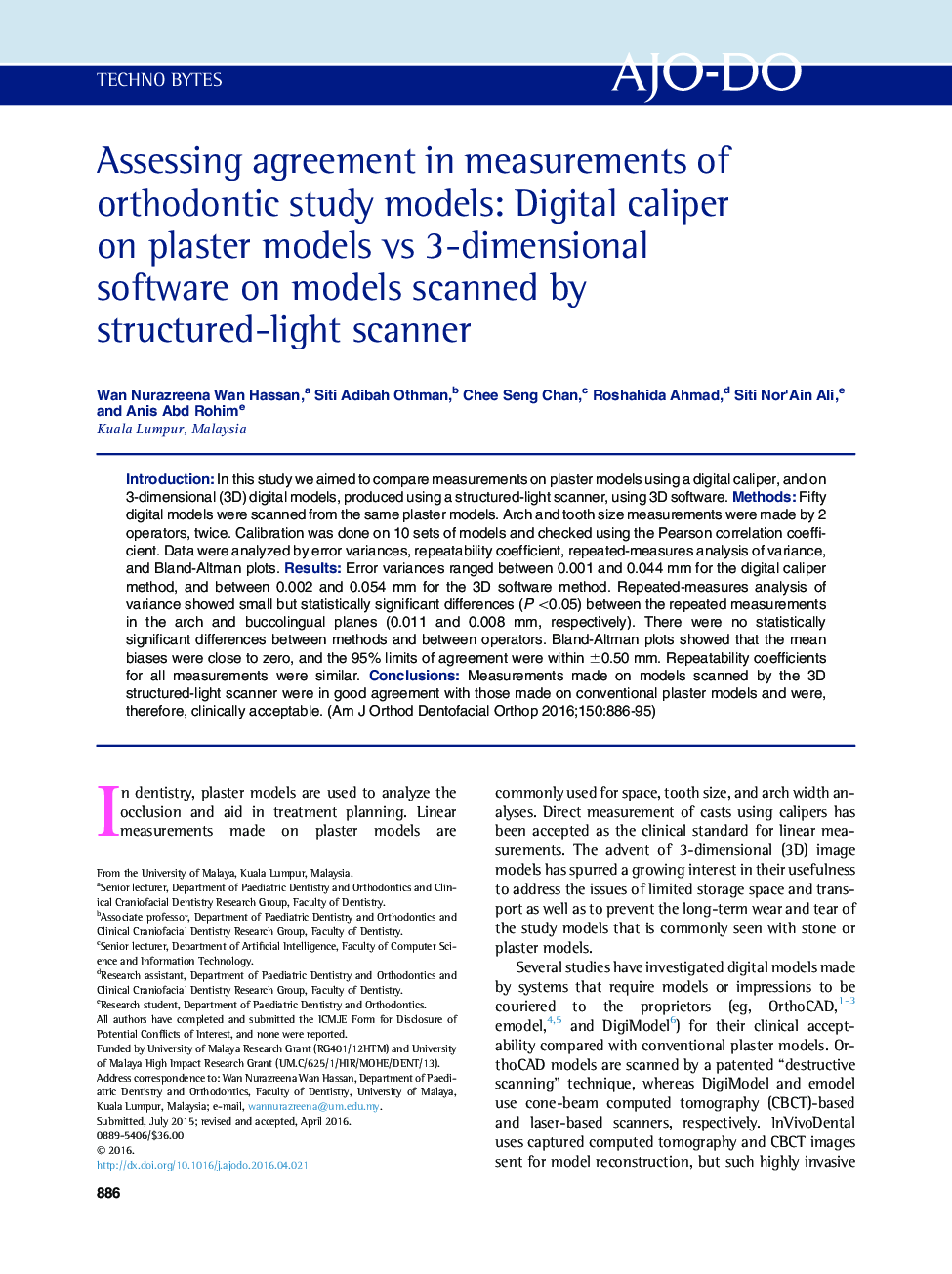| Article ID | Journal | Published Year | Pages | File Type |
|---|---|---|---|---|
| 5637769 | American Journal of Orthodontics and Dentofacial Orthopedics | 2016 | 10 Pages |
â¢Measurements made on plaster and 3D models were compared.â¢3D models were digitized by structured-light scanner using mirror software.â¢Differences between the 2 methods were not clinically significant.â¢Measurements made by both methods were similarly reliable.
IntroductionIn this study we aimed to compare measurements on plaster models using a digital caliper, and on 3-dimensional (3D) digital models, produced using a structured-light scanner, using 3D software.MethodsFifty digital models were scanned from the same plaster models. Arch and tooth size measurements were made by 2 operators, twice. Calibration was done on 10 sets of models and checked using the Pearson correlation coefficient. Data were analyzed by error variances, repeatability coefficient, repeated-measures analysis of variance, and Bland-Altman plots.ResultsError variances ranged between 0.001 and 0.044 mm for the digital caliper method, and between 0.002 and 0.054 mm for the 3D software method. Repeated-measures analysis of variance showed small but statistically significant differences (P <0.05) between the repeated measurements in the arch and buccolingual planes (0.011 and 0.008 mm, respectively). There were no statistically significant differences between methods and between operators. Bland-Altman plots showed that the mean biases were close to zero, and the 95% limits of agreement were within ±0.50 mm. Repeatability coefficients for all measurements were similar.ConclusionsMeasurements made on models scanned by the 3D structured-light scanner were in good agreement with those made on conventional plaster models and were, therefore, clinically acceptable.
